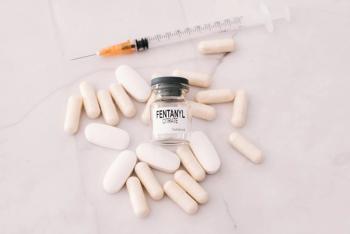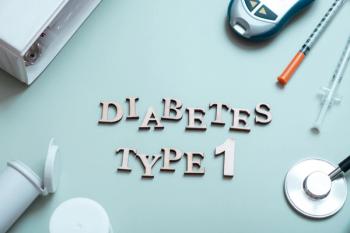
What's on the horizon for diabetes therapy?
SGLT2 inhibitors, GLP-1 receptor agonists, inhaled insulin, extended-release treatments, and fixed-dose combination therapies are among the approaches that have emerged to treat the exploding numbers of type 2 diabetes patients.
Diabetes mellitus is a complex, chronic illness that affects approximately 29 million Americans. Optimal management of type 2 diabetes mellitus (T2DM) - which accounts for 90% of all diabetes cases - usually requires a multifaceted approach that includes lifestyle changes and pharmacotherapy.
Although various treatment options are available, studies show that many patients with T2DM often fail to achieve and maintain optimal glucose control. Diabetes patients often require multiple agents with different, yet complementary, mechanisms of action to control their blood sugar levels, said Jennifer Costello, PharmD, BCPS, BC-ADM, ambulatory care clinical pharmacist at Saint Barnabas Medical Center in Livingston, N.J.
To help patients and clinicians cope with this growing challenge, it’s not surprising that new diabetes therapies are emerging.
SGLT2 inhibitors
A novel category of antidiabetes drugs with an insulin-independent mechanism has recently emerged. Sodium-glucose co-transporter 2 (SGLT2) inhibitors, unlike other available agents, promote urinary glucose excretion by inhibiting glucose reabsorption in the kidneys.
Dapagliflozin (Farxiga; AstraZeneca/Bristol-Myers Squibb) was the second SGLT2 inhibitor to reach the market in January 2014, joining canagliflozin (Invokana, Janssen). The drug’s efficacy and safety were evaluated in 16 clinical trials involving more than 9,400 patients with T2DM. In the studies, dapagliflozin was shown to help improve glycemic control and offer additional benefits of weight loss and blood pressure reduction.
According to the drug label, hypotension and dehydration may occur while taking dapagliflozin, especially among patients who are elderly, who have impaired renal function, or who are taking diuretics. Germin Fahim, PharmD, clinical assistant professor at Ernest Mario School of Pharmacy and internal medicine clinical pharmacist at Monmouth Medical Center, Long Branch, N.J., pointed out that mycotic and urinary tract infections were more commonly seen in clinical trials with SGLT2 inhibitors than with placebo - adverse events likely due to the drug’s mechanism of action.
Once-daily empagliflozin (Jardiance; Boehringer Ingelheim) received FDA approval for adults with T2DM in August 2014, based on seven studies with about 4,500 patients. “Like other SGLT2 inhibitors, it is contraindicated in patients with severe renal impairment, end-stage renal disease, or those receiving dialysis,” noted Costello.
Pfizer’s investigational SGLT-2 inhibitor, ertugliflozin, is currently in phase 3 clinical trials.
GLP-1 receptor agonists
Glucagon-like-peptide-1 (GLP-1) receptor agonists are also effective for glycemic control in diabetes patients.
The latest GLP-1 receptor agonist to gain FDA approval is dulaglutide (Trulicity; Eli Lilly), a once-weekly subcutaneous injection that is indicated as an adjunct to diet and exercise in the management of T2DM.
The September approval of dulaglutide was based on six clinical trials that evaluated its safety and efficacy in more than 3,300 patients. The GLP-1 receptor agonist was used alone or in combination with other commonly prescribed diabetes drugs, including metformin, a sulfonylurea, thiazolidinedione, and prandial insulin. Study patients receiving dulaglutide showed improvements in blood glucose control.
Dulaglutide was approved with a risk evaluation and mitigation strategy (REMS). The drug will carry a boxed warning that notes increased risk for thyroid C-cell tumors. The warning is based on animal studies; it is not known whether dulaglutide causes thyroid C-cell tumors, including medullary thyroid carcinoma (MTC), in humans. The drug is contraindicated for patients with a personal or family history of MTC or in patients with multiple endocrine neoplasia syndrome type 2.
Post-marketing studies for dulaglutide will include an MTC case registry for at least 15 years, as well as a cardiovascular outcomes trial for patients with a high baseline risk of cardiovascular disease. There will also be a clinical trial to compare the effectiveness of dulaglutide with that of insulin glargine on glycemic control for patients with T2DM and renal impairment. Availability of dulaglutide in 0.75-mg and 1.5-mg single-dose pens is expected later this year.
Earlier this year another new GLP-1 receptor agonist, albiglutide (Tanzeum; GlaxoSmithKline), was approved to help improve glycemic control, along with diet and exercise, in adults with T2DM. The once-weekly subcutaneous injection was studied as monotherapy and in combination with other diabetes drugs, including a metformin, metformin and a sulfonylurea, a thiazolidinedione (with and without metformin), and insulin. Its safety and efficacy were evaluated in eight clinical trials involving more than 2,000 patients with T2DM. Presented at the 74th Scientific Sessions of the American Diabetes Association (ADA), new data from secondary analyses of four phase 2 studies demonstrated that patients who remained on albiglutide continued to show blood glucose lowering at three years, consistent with results at the 52-week primary end point.
Albiglutide also carries a boxed warning, stating that the drug should not be used in patients with a personal or family history of MTC or those with multiple endocrine neoplasia syndrome type 2.
In clinical studies, there were more cases of acute pancreatitis among patients treated with albiglutide than in comparator groups. The drug manufacturer recommends that patients should be counseled to contact their physicians if they experience symptoms characteristic of acute pancreatitis, such as persistent, severe abdominal pain radiating to the back, which may or may not be accompanied by vomiting.
The other weekly GLP-1 agonist currently available is AstraZeneca’s exenatide extended-release for injectable suspension (Bydureon Pen), intended for use as an adjunct to diet and exercise in the treatment of T2DM. The new prefilled pen contains the same extended-release formulation and dose of exenatide as the single-dose tray, but “eases the self-injection process for the patient by eliminating the need to transfer the medication between vial and syringe,” said Costello. Microsphere technology in the Bydureon Pen delivers exenatide in a once-weekly dose requiring no titration.
When it comes to managing diabetes, medication adherence is one of the biggest obstacles to better patient outcomes. “The game-changer concept here is the convenience factor of taking a drug just once a week rather than every day,” Costello said.
Inhaled insulin
FDA’s recent approval of Afrezza (MannKind Corp.), regular insulin delivered through a small inhaler, offers an alternative for diabetes patients requiring mealtime insulin to control blood sugar levels. However, patients with type 1 diabetes must use Afrezza in combination with long-acting insulin. .
According to the manufacturer, the amount of insulin delivered to the lungs depends on factors specific to the individual patient. “Afrezza is an ultra-rapid-acting insulin, and is believed to be more fast-acting than injectable insulins such as NovoLog and Humalog,” Costello said. Peak insulin levels are achieved within 12 to 15 minutes of Afrezza administration and return to baseline in about 180 minutes. Costello believes that Afrezza’s rapid action, injection-free delivery, and ease of use may be a welcome option for many patients who need insulin.
“Pharmacists should remind patients that the sealed cartridges should be kept at room temperature for about 10 minutes before inserting in the inhaler,” said Fahim. According to the drug labeling, the sealed cartridges can be kept outside the refrigerator for up to 10 days.
Afrezza is contraindicated in patients with chronic lung disease, such as asthma or chronic obstructive pulmonary disease, due to the risk of acute bronchospasm. The long-term safety of inhaled insulin on the lungs remains unclear.
Combine and conquer
The management of diabetes is a challenging task for many patients, who must follow complex daily instructions involving diet, exercise, multiple insulin injections, and oral medications.
A newly diagnosed patient with T2DM is usually prescribed metformin monotherapy, based on consensus treatment guidelines published by the American Diabetes Association (ADA). “However, as the disease progresses, these patients do not achieve the recommended glycemic goals with monotherapy and quite often require multiple agents,” said Costello.
Population studies conducted among patients at U.S. Veterans Administration hospitals and by the National Health and Nutrition Examination Survey (NHANES) show that nearly half the patients with T2DM had hemoglobin A1c levels above 7%. Common reasons cited for medication nonadherence include side effects, cost, and lack of confidence in immediate or future benefits of therapy.
Various fixed-dose combination (FDC) therapies of GLP-1 agonists, SGLT2 inhibitors, and insulin analogues may help ease the burden of diabetes management for many patients. FDC drugs are a big win for diabetes patients, because “they offer a means to simplify complex treatment regimens, and help improve convenience and compliance for patients with a high pill burden,” said Eamonn O’Connor, PhD, senior analyst at Decision Resources Group in Burlington, Mass. However, the less flexible titration is a main drawback of these combination agents.
Current unmet needs
Based on a survey of U.S. and European payers and physicians recently conducted by Decision Resources Group, U.S. physicians agreed that a greater reduction in body weight is the biggest unmet need relating to T2DM therapy.
Meanwhile, U.S. payers identified improvements in drugs’ effectiveness in aiding decrease in body weight and incidence of cardiovascular adverse events as the key drivers of formulary inclusion.
Thought leaders are cautiously optimistic that when included as part of FDC treatments, SGLT-2 inhibitors and other drugs may address these unmet needs.
O’Connor believes that the combination therapies represent a major departure from the standard diabetes drugs.
FDC therapies
Invokamet (canagliflozin/metformin; Janssen) is the first SGLT2 inhibitor/metformin fixed-dose agent to receive FDA approval for the treatment of T2DM. “It provides a two-pronged treatment approach, allowing patients to reap the clinical benefits of two complementary agents and simplify their drug regimen,” said Costello.
In two studies comparing canagliflozin plus metformin with current standard treatments plus metformin - one studying sitagliptin and other glimepiride - canagliflozin dosed at 300 mg provided greater reductions in A1c levels and body weight than either comparator.
“With its clinical benefits and increased convenience, the addition of Invokamet to the diabetes treatment arsenal is an important step forward for patients,” said Jimmy Ren, PhD, Metabolics Therapeutic Area Lead, Medical Affairs, Janssen Pharmaceuticals.
The overall incidence of adverse events seen with canagliflozin was similar to that of its comparators. Costello urges pharmacists to be aware of safety concerns - including a black-box warning for lactic acidosis, a rare but serious complication that can occur as a result of metformin accumulation.
FDA recently approved one of AstraZeneca's SGLT2-based combination drugs, dapagliflozin/metformin extended-release (Xigdulo XR) for adults with T2DM. In other news, a recent phase 3 study showed that patients inadequately controlled on metformin achieved a significant reduction of A1c levels with AstraZeneca's dapagliflozin/saxagliptin, more than they did with either drug alone.
The investigational tablet empagliflozin/linagliptin (Boehringer Ingelheim, Eli Lilly), showed statistically significant reductions in blood glucose levels than either drug did alone. If approved, this combination would bring together the distinct mechanisms of SGLT2 inhibitor and dipeptidyl peptidase-4 (DPP-4) inhibitor for the first time in one tablet.
Other pipeline agents
Insulin therapies have advanced significantly in recent years. Modifications of insulin have focused on pharmacokinetic changes, to make its action more rapid or prolonged. On the horizon is insulin degludec (Tresiba; Novo Nordisk), which has a longer duration of action than insulin glargine and provides similar glucose control with less nocturnal hypoglycemia. “Insulin degludec’s prolonged duration may decrease patients’ need to split their insulin glargine dose and inject twice daily, thereby improving compliance,” said Fahim.
A report from Decision Resources finds that Novo Nordisk’s FDC therapy, insulin degludec/liraglutide (Xultophy), is set to become the clinical gold standard among FDCs used to treat T2DM. The insulin/GLP-1 agonist combination was found to be safe and more effective than either agent alone, according to results from a phase 3 trial. Researchers found that the combination significantly improved A1c levels, weight loss, and hypoglycemia. The study participants, who had been inadequately controlled on metformin with or without pioglitazone, received either the combination drug insulin degludec alone, or liraglutide alone.
John B. Buse, PhD, professor of medicine and chief of the Division of Endocrinology at the University of North Carolina School of Medicine in Chapel Hill, discussed the study in a presentation. He said that “achieving an A1c level of 6.4% is almost unheard of in patients who had failed an oral agent.” Another noteworthy finding was the lower incidence of gastrointestinal side effects when combination therapy was used, rather than liraglutide alone.
Currently indicated for T2DM, Novo Nordisk’s liraglutide (Victoza) could also benefit patients with type 1 diabetes when used in conjunction with insulin, according to the results a randomized trial.
Monica Shah is a writer and hospital pharmacist in New Jersey.
Newsletter
Pharmacy practice is always changing. Stay ahead of the curve with the Drug Topics newsletter and get the latest drug information, industry trends, and patient care tips.





















































































































































